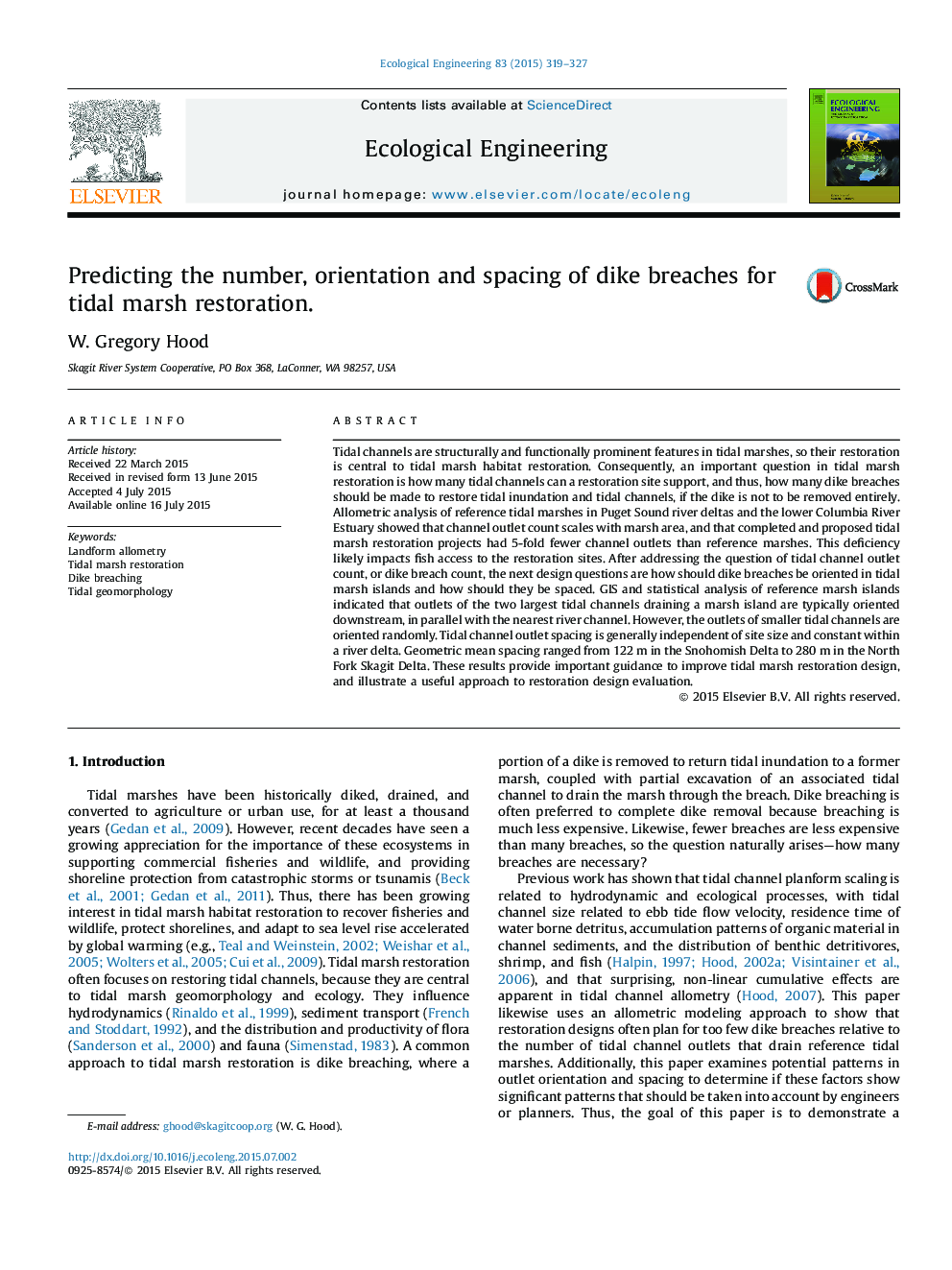| Article ID | Journal | Published Year | Pages | File Type |
|---|---|---|---|---|
| 4388881 | Ecological Engineering | 2015 | 9 Pages |
•Tidal marsh restoration sites had 1/5 the number of channels as reference marshes.•Channel outlet paucity likely limits fish accessibility to restoration sites.•Outlet orientation was downstream for the two largest reference marsh channels.•Outlet orientation was random for smaller channels draining reference marshes.•Channel outlet spacing showed no particular pattern.
Tidal channels are structurally and functionally prominent features in tidal marshes, so their restoration is central to tidal marsh habitat restoration. Consequently, an important question in tidal marsh restoration is how many tidal channels can a restoration site support, and thus, how many dike breaches should be made to restore tidal inundation and tidal channels, if the dike is not to be removed entirely. Allometric analysis of reference tidal marshes in Puget Sound river deltas and the lower Columbia River Estuary showed that channel outlet count scales with marsh area, and that completed and proposed tidal marsh restoration projects had 5-fold fewer channel outlets than reference marshes. This deficiency likely impacts fish access to the restoration sites. After addressing the question of tidal channel outlet count, or dike breach count, the next design questions are how should dike breaches be oriented in tidal marsh islands and how should they be spaced. GIS and statistical analysis of reference marsh islands indicated that outlets of the two largest tidal channels draining a marsh island are typically oriented downstream, in parallel with the nearest river channel. However, the outlets of smaller tidal channels are oriented randomly. Tidal channel outlet spacing is generally independent of site size and constant within a river delta. Geometric mean spacing ranged from 122 m in the Snohomish Delta to 280 m in the North Fork Skagit Delta. These results provide important guidance to improve tidal marsh restoration design, and illustrate a useful approach to restoration design evaluation.
